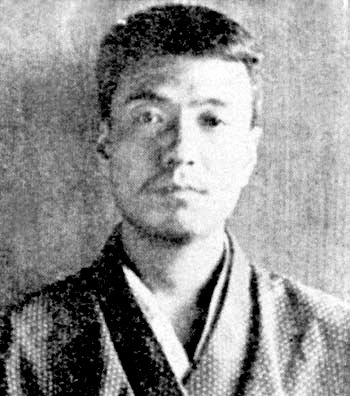
#304 AIが俳句を解釈したらこうなった。 「旅せんと思ひし春も暮れにけり」高浜虚子
旅せんと思ひし春も暮れにけり
高浜虚子
"Thinking to travel, yet the spring has already faded."
Takahama Kyoshi

解説:
この俳句「旅せんと思ひし春も暮れにけり」は、高浜虚子によって作られた作品です。この一句は、春の終わりと旅立ちへの思いを感慨深く表現しており、季節の移り変わりと個人的な感情の変化を巧みに描いています。
風物詩
この俳句における「春も暮れにけり」は、春の季節が終わりに近づいていることを示しています。日本において春は、桜の花が咲き乱れる美しい季節として知られ、多くの人々に愛されています。春の終わりは、それらの花が散り、新緑が深まる時期を指し、一つの季節の美しさが終わりを告げる瞬間を象徴しています。この自然のサイクルは、はかなくも美しい瞬間の連続であり、多くの感慨をもたらすものです。
表現手法
「旅せんと思ひし」というフレーズは、作者が旅に出ることを考えていた、あるいは決心していたことを示しています。しかし、「春も暮れにけり」と続くことで、その旅がまだ始まっていないことや、計画が遅れていることを暗示しています。この表現には、期待と現実のギャップ、あるいは夢と現実の間の緊張感が込められており、読者に対して深い共感や想像を促します。
情緒や感情
この俳句は、季節の変わり目における個人的な感情の移ろいを描いています。春の終わりというのは、新たな始まりを予感させる一方で、過ぎ去る美しい時を惜しむ気持ちをも生じさせます。また、旅に出るという思いが実現されずにいることへの焦燥感や、未来への不安も感じさせるでしょう。このように、この俳句は、自然の移り変わりと同時に、人間の内面における複雑な情感を巧妙に表現しています。
全体として、この俳句は春の終わりという自然の変化と、旅への未練がまだ果たされていないという個人的な状況をリンクさせ、読者に強い情感的共鳴を呼び起こします。それは自然のサイクルと人間の感情が密接に結びついていることを示唆しており、詩的な表現を通じて深い感慮を促す作品です。
英訳:
Explanation
This haiku by Takahama Kyoshi captures a poignant moment of realization and personal reflection as the vibrant season of spring nears its end.
Seasonal Imagery
The phrase "yet the spring has already faded" evokes the ephemeral beauty of spring, a beloved season in Japan characterized by the blossoming of cherry flowers. The end of spring marks a transition where the vivid blooms give way to the lush greens of early summer, symbolizing the passing of beauty and the relentless march of time. This natural cycle is depicted as a fleeting series of beautiful moments, stirring deep emotions.
Artistic Expression
"Thinking to travel" suggests a personal intention or longing to embark on a journey that has not yet begun. By coupling this with the fading of spring, the haiku subtly hints at missed opportunities or delays in realizing one’s plans. This expression illustrates a gap between expectation and reality, between dreams and their execution, creating a tension that resonates with the reader on an emotional level.
Emotional and Sentimental Tone
The haiku deeply explores the interplay of personal emotions with the seasonal changes. The ending of spring can evoke a sense of melancholy for the lost beauty and a reflective mood regarding the passage of time. Simultaneously, the unrealized intention to travel may add feelings of restlessness or a poignant sense of unfulfilled desires. This haiku, therefore, captures a complex emotional landscape where the changes in nature mirror inner emotional states, evoking both nostalgia for what has passed and uncertainty about the future.
Overall, Kyoshi’s haiku beautifully intertwines the natural transitions of the seasons with a narrative of personal contemplation, encouraging the reader to reflect on the transient nature of both beauty and human aspirations. It presents a contemplative view of life’s fleeting moments and the subtle emotional shifts that accompany the changing seasons.
高浜虚子

高浜虚子(1874年 - 1959年)は、日本の俳人で、明治から昭和時代にかけて活躍しました。彼は「ホトトギス」の主宰者としても知られ、その指導下で日本俳句の発展に大きく寄与しました。虚子は正岡子規に師事し、客観写生を俳句の重要な理念として提唱しました。このスタイルは自然を詠む際の直接的な観察に基づき、季語を用いた表現が特徴です。
彼の俳句は「花鳥諷詠」の美学を重んじ、自然や季節の変化を詠み込むことで知られています。虚子の作品には、自然景観や日常の一コマを捉えた深い感動が込められており、その中には心情を巧みに表現する作品も多数あります。例えば、虚子は日本の各地を舞台にした句を多く残しており、その中には鎌倉や春の浜辺など、具体的な風景を描写したものも含まれています。
高浜虚子についてさらに詳細な情報は、Wikipediaの高浜虚子のページで確認することができます。
四月二十六日
(英訳:ChatGPT 解説:Bing / ChatGPT 画像生成:midjourney)
この記事が気に入ったらサポートをしてみませんか?
